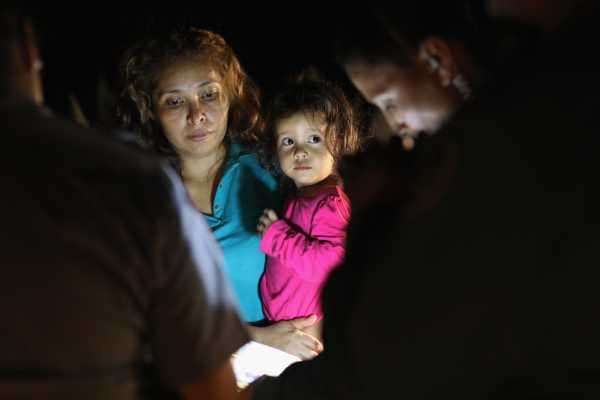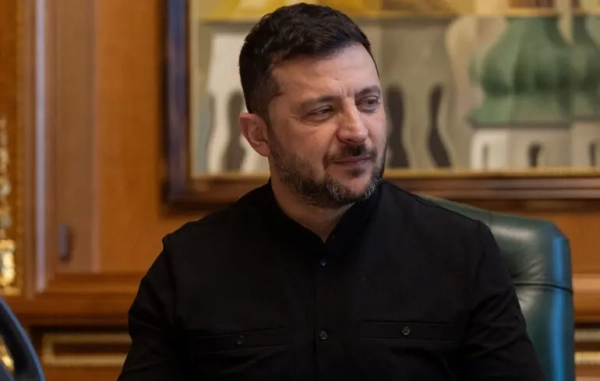
The separation of children from their parents at the US-Mexico border under the Trump administration’s “zero tolerance” policy is, to many people — liberals and conservatives alike — a viscerally repellent act.
Reports like the recording ProPublica obtained of children crying for their parents, or accounts of children in temporary foster care crying themselves to sleep every night, inspire in a lot of people the idea that something deeply wrong is happening. They make it apparent that not only are children being harmed, but they may be being harmed permanently.
It seems to be, in a word, traumatic.
But when we call family separation traumatic, what does that actually mean? What about children’s brains and their understanding of the world is broken when they’re taken from a parent?
Over the past few decades, we’ve gained a lot of insight into this question. And one of the foremost experts on it is Nadine Burke Harris, whose organization, the Center for Youth Wellness, does research and clinical work on “toxic stress” — a condition that researchers have identified with significant mental and physical health differences, in the short and long run.
The key to preventing an adverse childhood experience from metastasizing into toxic stress, Harris and others have concluded, is having a “safe, stable, nurturing relationship” with an adult caregiver.
In other words, Harris told me, Trump’s policy is “almost a recipe for toxic stress.”
I spoke with Harris by phone a few days ago. A transcript of our conversation, edited for length and clarity, is below.
Dara Lind
What are your concerns about this particular policy of family separation? What made you decide that this was something you needed to speak up about in particular when it comes to the long-term well-being of the children involved?
Nadine Burke Harris
Toxic stress results from the exposure of children to stressful or traumatic events that activates the biological stress response in a significant way. Normally, when kids have access to safe, stable, nurturing relationships, those relationships and other factors are a buffer to this overactivation of the stress response.
So when we look at the biology of toxic stress, we recognize that the goal is not just to eliminate all stress from children’s lives. It’s to understand we can prevent long-term health problems by ensuring that the conditions to prevent toxic stress are in place.
This policy is — unfortunately, it’s almost a recipe for toxic stress. What this policy puts into place defies all of the science about what we know about the long-term implications of children’s exposure to significant adversity and how we can mitigate that damage.
The big concern for us as a scientific organization is that all of the research shows that even when kids are exposed to significant stressors, the presence of a nurturing caregiver to be a buffer of that stress protects children’s health.
Dara Lind
I want to drill down on that a bit. I think it’s kind of important to put this in the context of a family that’s coming from, say, El Salvador or Honduras — they’re fleeing gang violence and deprivation and other things that you would think of as being dangerous for a child, and they’ve just taken this very dangerous journey.
Can you talk about exactly how it works that having the parent there is going to act as a buffer? What’s the difference between going through that process with your parent and having your parent separated at the end of it?
Nadine Burke Harris
When kids experience scary things, it activates something called their fight-or-flight response. The amygdala, which is the fear center in the brain, is activated, and that triggers the release of a cascade of stress hormones.
Normally, what happens when anyone of us is faced with a threat is that there is activation of this fight-or-flight response: the brain activation of the stress response leading to it, the body’s activation of all these stress hormones.
Particularly for children, one of the most important factors is having a nurturing caregiver who the child trusts — that actually helps to support the child to biologically turn off that biological stress response.
One way this happens: Oxytocin is a bonding hormone. For anyone who’s ever had a baby, it’s a hormone that we use to augment labor — it stimulates contractions of the uterus — and it’s this incredibly strong bonding hormone so that when the baby comes out, you look at the baby and you’re just like, “I love you so much!”
What’s interesting is that when parents hug or snuggle or give kisses to their children, it increases the release of oxytocin in the child’s body. And oxytocin, as a chemical hormone, inhibits the activation of the stress response. So it actually helps to calm down and biologically buffer the stress response.
But if it’s a stranger that you don’t know, you don’t get that same effect.
When children are faced with high doses of adversity, in the absence of that buffering caregiving, what happens is that the stress response system doesn’t turn itself off normally. And that leads to a condition that is now known as toxic stress, in which we have overactivity of the stress response, abnormal levels of stress hormones.
And that changes the structure and function of children’s developing brain, their developing immune system, their hormonal system, and even the way that DNA is read and transcribed.
So how we see that in the short term is that kids are at greater risk for infection, growth problems, sleep problems, problems with digestion, and increased risk of autoimmune disease. And in the long term, what we see is increased risk of heart disease, stroke, cancer, Alzheimer’s, diabetes, and other health conditions.
Dara Lind
How long does the separation have to be to start running the risk of long-term damage? In a situation in which the parents are actually being reunited with kids after a couple of days or weeks, is that going to be the same level of threat as being separated from them for months or indefinitely? Or is it worse to have them separated for longer?
Nadine Burke Harris
It’s certainly worse to have them separated for longer. In the short answer of “What’s the minimum dose?” — we don’t know that.
Our environment shapes the way our DNA is read and transcribed through something called epigenetic regulation. And each child’s predisposed vulnerability may be different, so there’s a lot of individual differences between children.
For some children, a lower dose of adversity will lead to a toxic stress response. For others, there are genetic protections. and it’s a combination between what are their genetic protections and vulnerabilities and also what their environmental protections or vulnerabilities are.
But we do know that after a certain dose of adversity, most kids begin to have some type of symptomatology.
Dara Lind
From the perspective of, say, a foster family that might be looking after these kids temporarily, what are the behavioral and observational signs that you’d see that would indicate that the child has been particularly adversely affected?
Nadine Burke Harris
Typically, you may see changes in behavior; you may see changes in their eating patterns. For little kids, like 4- and 5-year-olds, they may revert to bed wetting. We might see some developmental regression, whether it’s in speech or language, toileting, or other things. You may see increased risk of viral infection, or bacterial infection, from the inhibition of the immune system.
One of the most common risks that we see is behavioral problems, difficulty with self-regulation, impulse control, and those types of things.
Dara Lind
One of the things that has become clear as the policy has been implemented is that children that are coming with their parents are often a lot younger than the kids who have been coming as unaccompanied children in the past. We’re dealing with a lot of people under 5. Is there a particular critical window at which the long-term neurological effects of this are really critical?
Nadine Burke Harris
There are two types of neuroplasticity. There’s synaptic plasticity, and that’s like changing your voice from a whisper to a shout. It’s the strength of the signal across the brain, across the synapse, the connection between two brain cells.
The other type is called cellular plasticity, it’s the number of brain cells that talk to each other. It’s the difference between one person shouting and a whole stadium shouting.
Cellular plasticity, the second kind, is very rapid in the first five years of life. So about 90 percent of it occurs by the sixth birthday. Meanwhile, synaptic plasticity is lifelong.
So what we see is that the exposures that happen in early childhood, through the first five years, tend to have an outsize impact on kids’ health and development, compared to impact that happens later, because of this change in neuroplasticity.
Dara Lind
What are the kind of super-long-term concerns — you know, 10, 20 years out — about having one traumatic experience and then having a lack of caregiver to nurture you through it?
Nadine Burke Harris
The long-term concerns are significant. We are looking at increased risk of health problems — significant health problems. I’m talking 10 to 20 years down the line, right?
So one of the big challenges is that these experiences of early adversity, if they lead to an overactivity of the stress response, that can be lifelong unless the child receives the appropriate intervention. That long-term overactivity of the stress response is what leads to increased risk of heart disease, cancer, stroke, Alzheimer’s, diabetes, obesity, mental health problems, increased risk of substance dependence, and other conditions like that. So it’s pretty worrisome.
The greater the cumulative adversity, the greater the risk. For these kids who are coming to the US, many of them have already experienced, for example, you mentioned maybe going through harrowing experiences to get here. So they may already have a significant cumulative dose of adversity when they get here.
And then having gone through this, when you remove the caregiver who is their buffer to adversity, that can lead to significant increased risk.
Dara Lind
Is there anything that can be done to mitigate that down the road?
Nadine Burke Harris
There are interventions that can help to mitigate the activity of the stress response. Working on an effective sleep regimen; making sure that kids are getting regular exercise, to be able to metabolize stress hormones and activate endorphins and other hormones that buffer the stress response. We talk about sleep, exercise, nutrition, mindfulness, mental health, and healthy relationships. But ultimately, getting to the root of the problems, which is addressing the chronic stress, is the big piece.
The work that we do at the Center for Youth Wellness is in vulnerable communities where there are a lot of chronic stressors. And so we are, right now, working really hard to find clinical interventions that will help to regulate the stress response and help to reduce the risk of these health problems. But we have a ways to go.
Dara Lind
When you say we have a ways to go, you’re essentially gesturing to the kind of policy changes that would prevent this from being an issue?
Nadine Burke Harris
When I say we have a ways to go, I mean in terms of the medical management of toxic stress as a condition. But the other piece in which we have a ways to go is the larger, and I think ultimately more significant piece: the work that we can do immediately.
So there’s one piece in terms of biomedical research that we need to be able to address toxic stress as a health condition. But the work that we can do immediately is around policy.
We have enough science to understand how we can be implementing policies that reduce the dose of adversity for kids and enhance the ability of their caregivers to be buffers. Because when we look at lead poisoning, we can chelate [medically remove] lead out of the blood of kids above a certain level.
But the most important thing we did with lead was policy around removing lead from paint and water and pipes and gasoline and pencils. Removing these environmental sources of lead was really a policy change, and that is what drove the dramatic decrease of lead poisoning and the resultant neurotoxicity in children.
Similarly, adversity in childhood is a neurotoxin. And we have an opportunity, as a nation, to reduce the environmental sources of adversity. If we have this policy, and we can either do it one way, which exacerbates and augments the childhood adversity, or we can do it in another way, which enhances and maximizes buffering and reduces the dose of adversity — the idea that we would choose to do it in a way that increases the stress and the trauma, and therefore increases the physical and psychological harm to the child, feels like it flies in the face of the science and the research.
Sourse: vox.com






